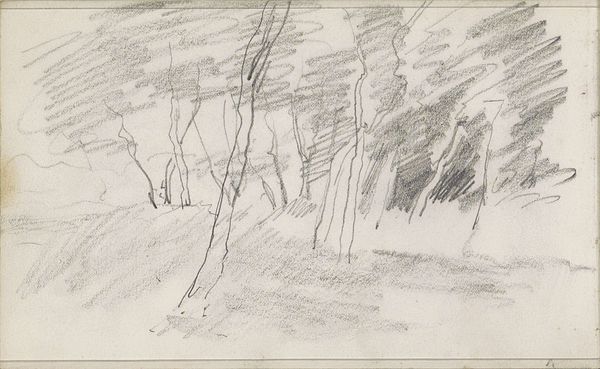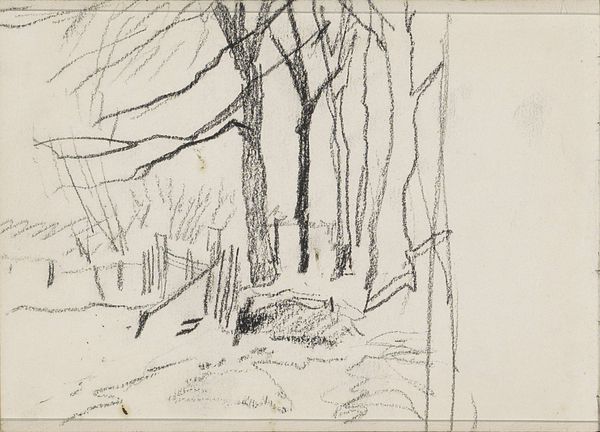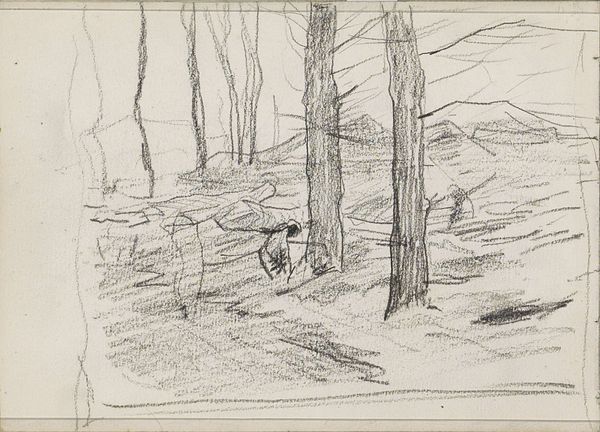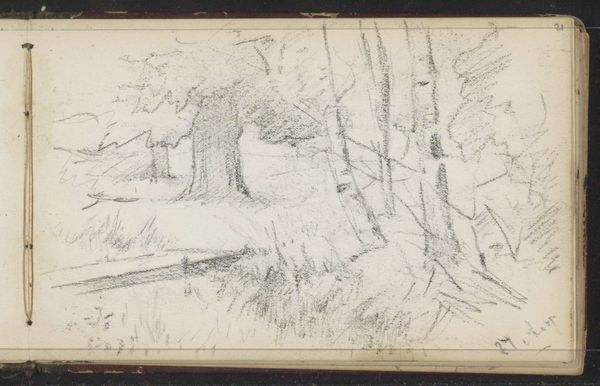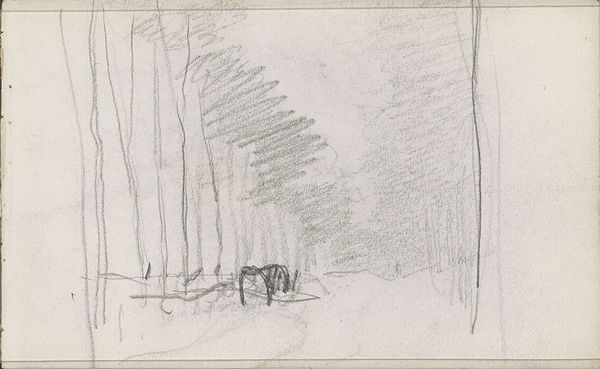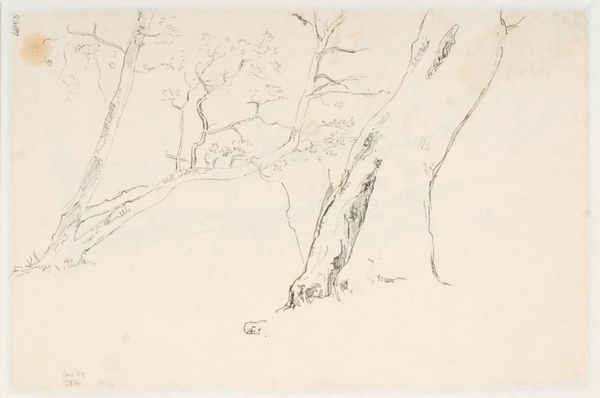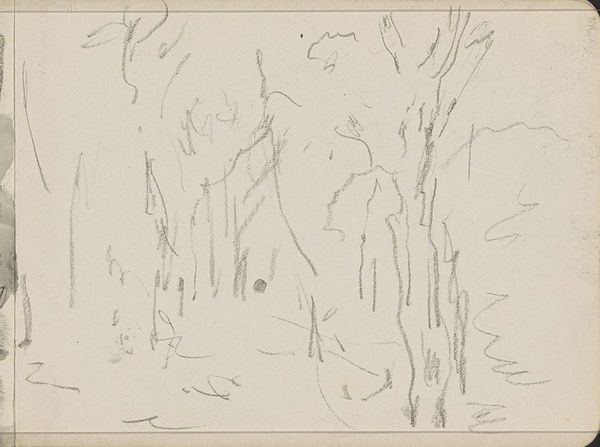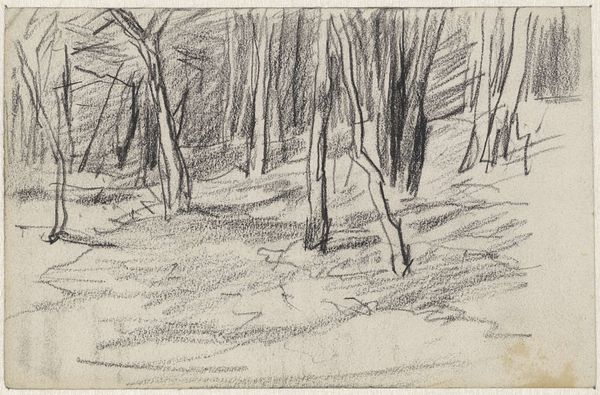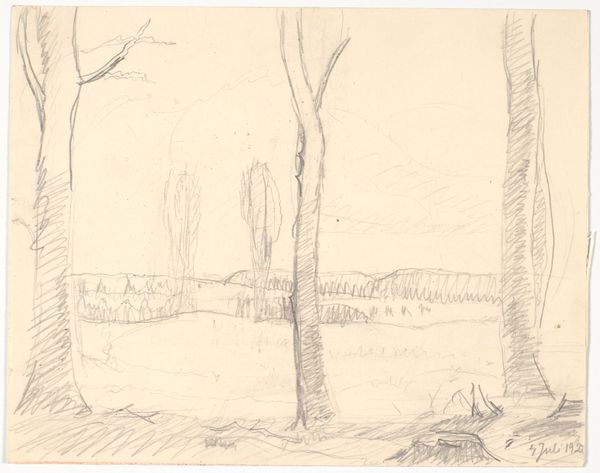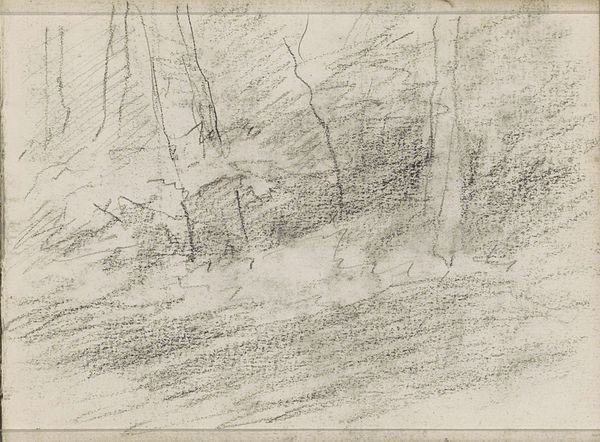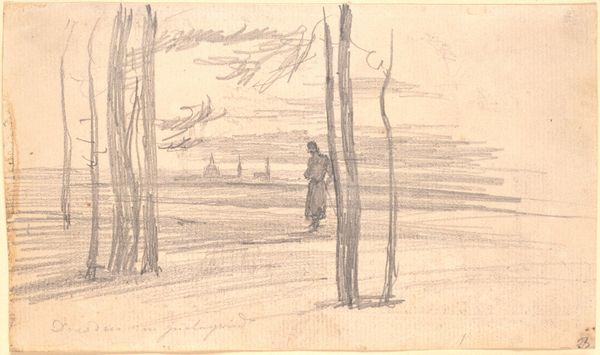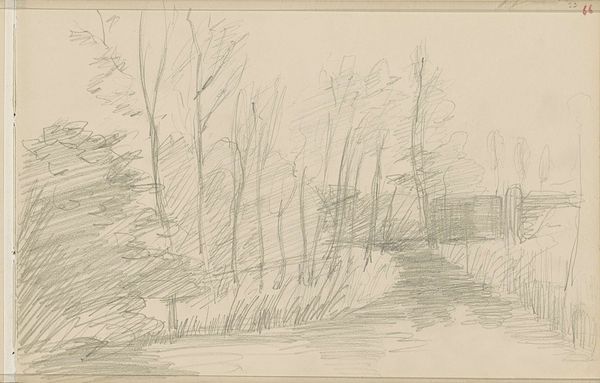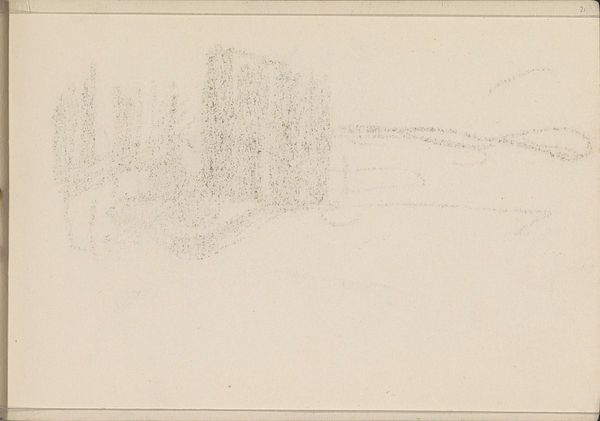
Copyright: Rijks Museum: Open Domain
Editor: Here we have Anton Mauve's "Landschap met bomen," or "Landscape with Trees," a pencil drawing estimated to be created between 1848 and 1888. There's a raw, almost unfinished quality that gives it a certain intimacy. What do you make of this piece? Curator: It’s fascinating how Mauve, a key figure of the Hague School, which was heavily influenced by the Barbizon School, engages with the romantic landscape tradition in this drawing. You see this fascination with rendering a raw sketch. It highlights a departure from idealized depictions toward a more naturalistic, less staged scene. In a period increasingly impacted by urbanization, how do you think viewers at the time would have received these kinds of works? Editor: I imagine there's an element of longing. The untouched landscape offered an escape from the industrialized cities, maybe a bit of a romanticized escape? Curator: Precisely. Think about the context of art institutions and the art market in the 19th century. Landscapes like these were increasingly popular in bourgeois circles, aligning with a nationalistic romanticism that saw virtue and identity rooted in the land. Moreover, landscape painting reinforced specific social hierarchies. The Romantics loved nature as sublime, vast, and uncontrollable. Mauve doesn’t offer that; what we find here is a controlled landscape, which relates directly to land ownership. Who is going to buy this work? A new bourgeoisie or someone seeking rural refuge and identification with nature? Editor: That’s such an interesting point about control. I was just seeing it as an informal sketch, but you’re right, there's that subtext of ownership and the political implications of landscape. It certainly provides new meaning to the relationship between art, audience and nature at this moment in art history. Curator: Absolutely. Considering that the drawing now resides in the Rijksmuseum, it has moved beyond the scope of being an owned property of an individual, now a Dutch national treasure. The pencil marks are a document and artefact in art history! Editor: Wow, I'll definitely be thinking about landscape art in a new way after this. Thanks!
Comments
No comments
Be the first to comment and join the conversation on the ultimate creative platform.
